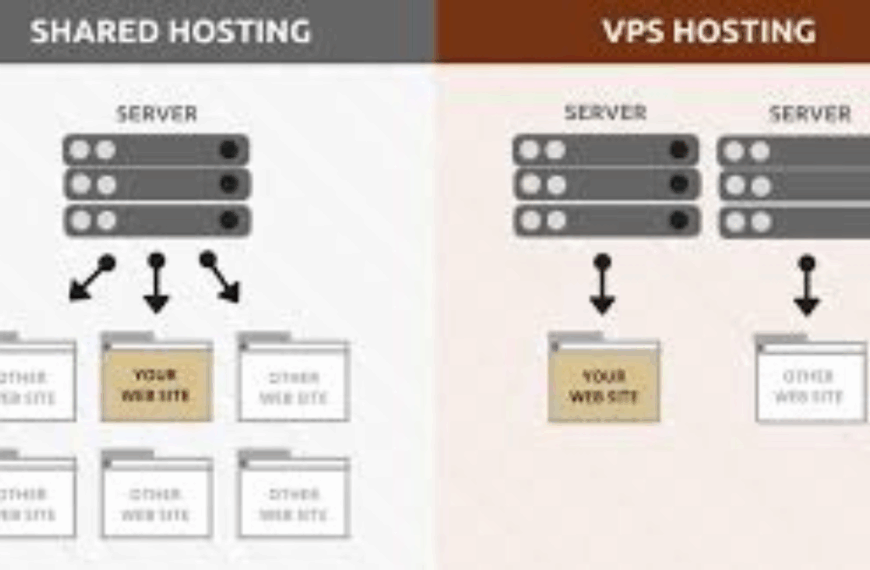Last updated on November 23rd, 2025 at 08:04 pm

Spear phishing attacks represent one of the most sophisticated cybersecurity threats facing UK individuals and organizations today.
Unlike traditional phishing campaigns that cast a wide net, these targeted attacks focus on specific people with laser-like precision.
Whether you’re managing your writing portfolio online or researching sensitive topics, you need reliable web hosting and domain names that prioritizes security. At TrueHost UK, we understand the importance of protecting your digital workspace from evolving cyber threats.
Understanding the Anatomy of Spear Phishing
So what exactly makes spear phishing so different from those obviously fake emails promising millions from Nigerian princes? The answer lies in personalization and research.
Spear phishing attacks target specific individuals or departments within organizations. This makes them exponentially more dangerous than their mass-produced cousins.
These attacks exploit human nature rather than network vulnerabilities. Think about it, you’re more likely to click on an email that appears to come from your editor, mentions your recent article, and requests urgent feedback.
The attackers don’t just send random emails hoping someone will bite. They gather information from social media, corporate websites, or industry publications to craft messages that feel authentic.
It’s like the difference between a generic telemarketing call and someone who knows your name, your job, and what you had for lunch yesterday.
To understand more on phishing, read the article: What is Phishing and How to Prevent Phishing
How Spear Phishing Works in Practice

The mechanics of spear phishing follow what cybersecurity experts call the “Phishing Kill Chain.” This isn’t some military operation, but it might as well be given the strategic planning involved.
The Four-Stage Attack Process
| Stage | Description | Example |
|---|---|---|
| Reconnaissance | Attackers research targets extensively | Combing through LinkedIn profiles, Twitter feeds, company websites |
| Weaponization | Crafting convincing, personalized emails | Impersonating your department head, referencing recent projects |
| Delivery | Sending the malicious message | Email appears to come from trusted source with urgent request |
| Exploitation | Victim takes the bait | Clicking links, downloading attachments, sharing credentials |
| The Others | Description | Example |
|---|---|---|
| Installation | The attacker uses the session cookie to assuume the victims identity. | With the stolen session cookie, the phished authentication, the adversary injects the cookie to their browser hence impersonating IT admin |
| Command and Control | The attacker creates a link to a system under their control. | Connection allows the attacjer to keep persistence in the compromised environments allowing ongoing control. |
| Actions | Attacker launches their phishing operation | Start sharing crafted phishing emails to targeted individuals |
First comes reconnaissance. Attackers research their targets extensively, combing through LinkedIn profiles, Twitter feeds, and company websites. They’re looking for personal details, professional relationships, and communication patterns.
For UK writers and students, this might mean analyzing your published work, your university affiliations, or your professional connections. Next, they craft their weapon—the email.
This isn’t a hastily written message full of spelling errors. It’s a carefully constructed piece of social engineering that references real people, real events, and real concerns.
Common Attack Vectors

Here’s where things get interesting. Spear phishing attacks come in various flavors, each more sophisticated than the last.
- Email Impersonation remains the gold standard. Attackers create email addresses that look legitimate at first glance. They might use domains like “univeristy.ac.uk” instead of “university.ac.uk”—spot the difference? Most people don’t.
- Fake Websites serve as the perfect complement to convincing emails. These sites look identical to legitimate platforms you use daily. You click a link to “verify your account” and suddenly you’re handing over your credentials to cybercriminals.
- Urgency-Based Messaging exploits our natural tendency to act quickly under pressure. Common phrases include:
- “Your account will be suspended in 24 hours”
- “Urgent revision needed for tomorrow’s publication”
- “Immediate action required to prevent data loss”
- “Final notice before account closure”
- Business Email Compromise (BEC) targets financial transactions and sensitive information. For freelance writers managing client payments or students handling university finances, these attacks can be particularly devastating.
Real-World Examples That Hit Close to Home
Let’s talk about recent cases that demonstrate just how sophisticated these attacks have become.
The 2024 Trump campaign attack by Iranian hackers showed how spear phishing can impact even high-security political operations.
The attackers used carefully crafted emails that appeared to come from trusted sources within the campaign. But you don’t need to be a political figure to become a target.
UK-Specific Spear Phishing Trends
| Target Group | Common Attack Methods | Average Financial Impact |
|---|---|---|
| Universities | Fake academic publishers, conference invitations | £50,000 – £200,000 |
| Healthcare | Impersonated NHS communications | £100,000 – £500,000 |
| Financial Services | Client impersonation, fake regulatory notices | £250,000 – £1,000,000 |
| Professional Services | Fake client requests, supplier impersonation | £25,000 – £150,000 |
UK universities have reported increasing spear phishing attempts targeting students and faculty. These attacks often impersonate academic publishers, conference organizers, or even university administration.
Corporate breaches tell similar stories. Companies lose millions not just from direct theft, but from reputational damage and operational disruption.
For professional writers working with sensitive client information, a successful spear phishing attack can end careers.
Detection Strategies That Actually Work
Here’s where we get practical. Recognizing spear phishing attempts requires a combination of technical awareness and human intuition.
Red Flags to Watch For

Email Header Analysis sounds technical, but it’s actually straightforward. Look at the sender’s email address carefully. Does it match the organization they claim to represent? Are there subtle misspellings or unusual domains?
Verify Through Alternative Channels represents your best defense. If someone emails requesting sensitive information or urgent action, pick up the phone or send a separate message through a different platform. Real requests can wait for verification.
Trust Your Instincts about communication patterns. Does this email sound like how your professor normally writes? Are they using phrases or requesting information that seems unusual?
Quick Verification Checklist
- Check sender’s email address for typos or unusual domains
- Verify urgent requests through alternative communication channels
- Look for generic greetings instead of personalized ones
- Examine links by hovering (don’t click) to see actual destinations
- Check for grammar and spelling errors in “official” communications
- Confirm any financial requests through established procedures
Technical Solutions for Modern Threats
Advanced email filtering with machine learning and AI has become increasingly sophisticated. These systems analyze thousands of data points to identify suspicious patterns that human eyes might miss.
Email security tools, spam filters, and secure email gateways create multiple layers of protection. Think of them as security checkpoints at an airport—each one catches different types of threats.
Essential Security Tools for UK Writers and Students
| Tool Category | Purpose | Recommended For |
|---|---|---|
| Email Filtering | Blocks suspicious messages | All users |
| Antivirus Software | Detects malware and threats | Individual users |
| VPN Services | Encrypts internet traffic | Remote workers |
| Password Managers | Secures account credentials | Everyone |
| Two-Factor Authentication | Adds login security layer | All online accounts |
For students and writers managing multiple online accounts, antivirus software, malware detection, and spam filters provide baseline protection. But remember, no technical solution is foolproof against well-crafted spear phishing attempts.
Building Human-Centered Defenses
User awareness training and email authentication form the foundation of effective spear phishing defense. Organizations across the UK are investing heavily in education programs that teach employees to recognize and respond to threats.
Spear-phishing simulations help users recognize risks in a controlled environment. These exercises reveal how even security-conscious individuals can fall victim to well-crafted attacks. The goal isn’t to embarrass anyone, but to build muscle memory for threat recognition.
Regular security training programs need to evolve with emerging threats. What worked against last year’s attacks might be ineffective against this year’s innovations.
Organizational Measures for Comprehensive Protection
Multifactor authentication (MFA) and VPN security create additional barriers for attackers. Even if they obtain your password through spear phishing, they still need that second factor to access your accounts.
Network segmentation, firewalls, and intrusion detection systems limit the damage when attacks succeed. If your hosting provider offers these features, they’re worth the investment.
Speaking of hosting, TrueHost UK provides enterprise-grade security features that protect against sophisticated cyber threats.
Incident response planning prepares organizations for the inevitable. When spear phishing attacks succeed, rapid response can minimize damage and preserve evidence for law enforcement.
What to Do When You’re Under Attack
Stay calm, don’t input data, delete and disconnect. This simple mantra can prevent minor incidents from becoming major disasters.
Change passwords immediately and contact your IT department or security team. Speed matters in cybersecurity since every minute an attacker has access increases potential damage.
Immediate Response Steps
- Don’t Panic – Rushed decisions often make situations worse
- Disconnect – Unplug from internet or turn off Wi-Fi
- Document – Screenshot the suspicious email before deleting
- Report – Contact your IT department or security team
- Change Passwords – Update all potentially compromised accounts
- Monitor – Watch for unusual account activity
Document everything you can remember about the attack. Screenshots, email headers, and timeline details help security professionals understand what happened and prevent future incidents.
The Future of Spear Phishing
AI-powered spear phishing represents the next evolution in this threat landscape. Machine learning algorithms can analyze vast amounts of personal data to create incredibly convincing attacks tailored to individual targets.
Deepfake technology adds another layer of complexity. Imagine receiving a video message from your department head requesting sensitive information. The technology to create convincing fake videos is becoming increasingly accessible.
Voice cloning presents similar challenges. Phone-based spear phishing attacks using AI-generated voices that sound like trusted colleagues or family members are already appearing in the wild.
Practical Steps for UK Writers and Students
For students conducting research, be particularly cautious about emails offering exclusive access to documents or databases. Verify academic sources through official channels, not links in unsolicited emails.
Professional writers should be skeptical of last-minute assignment requests, especially those involving sensitive topics or requiring unusual access permissions. Legitimate editors and publishers follow established communication protocols.
Consider using professional communication platforms like Microsoft Teams or Slack for sensitive discussions. These platforms offer better security features than standard email for confidential work.
Building Your Personal Defense Strategy
Start with a security audit of your digital life. What accounts do you have? How do they connect to each other? Understanding your digital footprint helps you recognize when something’s amiss.
Create different email addresses for different purposes. Use one for professional communications, another for academic work, and a third for personal matters. This segmentation makes it harder for attackers to build comprehensive profiles.
Invest in quality security tools, but remember that your brain remains your best defense. Technical solutions fail when humans make poor decisions under pressure.
The UK Context and Regulatory Landscape
The UK’s cybersecurity framework emphasizes both technical measures and human awareness. Government initiatives like the National Cyber Security Centre provide resources specifically designed for educational institutions and small businesses.
GDPR compliance adds another layer of complexity to spear phishing defense. Organizations must protect personal data while maintaining operational effectiveness. For writers handling client information, this balance requires careful planning and robust hosting solutions.
Looking Ahead
Spear phishing attacks will continue evolving as attackers develop new techniques and technologies. However, the fundamental principles of defense remain constant: stay vigilant, verify suspicious communications, and maintain good security hygiene.
The human element in cybersecurity cannot be automated away. While AI and machine learning improve our defensive capabilities, educated users remain our strongest asset against sophisticated attacks.
For UK students, bloggers, and professional writers, understanding spear phishing isn’t just about protecting yourself—it’s about protecting the people who trust you with their information.
It does not maatter if you’re managing source relationships, handling client data, or simply maintaining your professional reputation, cybersecurity awareness has become a fundamental skill in the digital age.
Remember, the best defense against spear phishing combines technical tools with human judgment. Stay informed, stay skeptical, and when in doubt, verify through alternative channels. Your digital safety depends on it.
Read Also:
 Domain Search
Domain Search Whois Lookup
Whois Lookup Domain Transfer
Domain Transfer All Domains
All Domains Web Hosting
Web Hosting Email Hosting
Email Hosting Reseller Hosting
Reseller Hosting Windows Hosting
Windows Hosting cPanel Hosting
cPanel Hosting VPS Hosting
VPS Hosting Managed VPS Hosting
Managed VPS Hosting Dedicated Server
Dedicated Server SSL Certificates
SSL Certificates All SSL
All SSL






